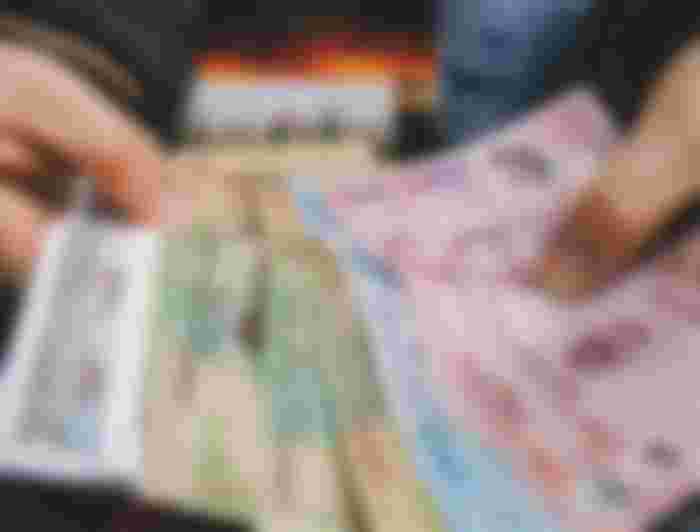
Concepts of Money
According to Walker Money is that money does. Economics offers various definitions for money, though it is now commonly defined as any good or token that functions as a medium of exchange that is socially and legally accepted in payment for goods and services and in settlement of debts.
Robertson defines money as, anything which is widely accepted in payment for goods or in discharge of other kinds of obligations is money.
Money is anything that serves as a commonly accepted medium of exchange. Gold, silver, copper, paper, commercial bills of exchange etc. use as money.
The Evaluation of Money
Barter System- Barter is the direct exchange of goods and services. The system can work if people produce for themselves most of the goods and services they need and rely on market exchanges for only a small number of items. However, barter has a number of significant disadvantages for economics which specialize. People wanting to save and those who are prepared to accept payment later may be uncertain as to what items will be in demand in the future.
It will also be difficult to make comparisons of the value of different items. However, the main disadvantage of barter is that it depends upon a double coincidence of wants. Time and energy which could be devoted to production is devoted to a time consuming system of exchange.
Commodity Money- As economics develop, people no longer barter one good for another. Most economics adopt money to overcome the problem they face in barter system. Money as a medium of exchange first comes into human history in the form of commodities. Cattle, olive oil, beer or wine, copper, iron, gold, silver, rings, diamonds, cigarettes etc.
Many early instances of money were objects which were useful for their intrinsic value as well as their monetary properties. This has been called commodity money; historical examples include iron nails (in Scotland), pigs, rare seashells, whale's teeth, and (often) cattle. In medieval Iraq, bread was used as an early form of currency.
By the nineteenth century commodity money was almost exclusively limited to metal like gold and silver. This form of money has intrinsic value.
Modern Money- The age of commodity money gave way to the age of paper money. The essence of money is now laid bare. Money is wanted not for its own sake but for the things it will buy. We keep money, it is valuable only because we can spend it later on. The use of paper money has become widespread because it is a convenient medium of exchange. Currency is easily carried and stored.
Forms of Money
Precious Metals: Over time a variety of items have acted as money. These have included the precious metals gold and silver. Gold and silver are portable since they have a very high commodity value and it is very easy to use them to produce items of uniform fineness. These metals are divisible without loss in value and they are easily recognizable. They can be stored without risk of deterioration and most important they are limited in supply.
Coins: The precious metals were first used as money on the basis of weight. However, the inconvenience of weighting out the metals each time a transaction took place led to the introduction of coins. It was appreciated that exchange would be greatly facilitated if the pieces of metal to be used as money carried some clear indication of their weight and fineness. Coins are shaped pieces of metal bearing some authoritative imprint which certifies their money value. Their money value exceeds their intrinsic value.
Bank notes: Bank notes first came into existence as people began to use claims to precious metal as money instead of the metal itself. The dangers of theft and lack of security in the average home meant that gold and silver were deposited in goldsmiths’ vaults – the depositors receiving some written acknowledgement of their ownership. These receipts developed into the bank notes with the promise on them to pay the bearer (i.e. anyone) instead of a named person. This promise originally meant that people could convert the notes into gold (or silver). However, nowadays bank notes are not backed by gold or silver.
Main forms of money today: Banknotes (also known as paper money) and coins are the most liquid forms of tangible money and are commonly used for small person-to-person transactions. Today, gold is commonly used as a store of value, but is not often used as a medium of exchange or a unit of account. But central banks do use gold as a unit of account.
The main forms of money used now are bank notes, coins and money placed in bank and building society accounts which are also known as deposits. As already noted, coins and bank notes no longer have any intrinsic value but they are universally acceptable. Nevertheless the most important component of the money supply in developed economics is now bank and building society deposits.
Near money: This can also be referred to as quasi-money. It consists of financial assets such as postal orders which are held mainly as a store of value rather than as a medium of exchange. Near money items fulfill some but not all the functions of money and usually have to be converted into true money before they can be spent. However, they are close to true money as they can usually be converted into cash quickly and at little or no cost.
There are also less tangible forms of money, which nevertheless serve the same functions as money. Checks, debit cards and wire transfers are used as means to more easily transfer larger amounts of money between bank accounts.
Electronic money is an entirely non-physical currency that is traded and used over the internet.
Credit
Credit is often loosely referred to as money. Money is used to buy goods and
services, whereas credit buys goods and services on the promise to pay with money in the future.
Bank notes are a form of credit. Gold-backed bills are likewise also a debt of the bank, a promise to pay in gold.
Functions of money
The function which money carries out makes it easier for people to buy and sell goods and services, make comparisons of the value of different items, save, borrow and lend. These functions are described as
Money is a matter of functions four
A medium, a measure, a standard, a store.
1. A medium of exchange
The earliest form of exchange was barter. This is a time consuming and inconvenient process because it depends upon a double coincidence of wants.
The use of money as a medium of exchange removes the difficulties of barter. It enables sellers to exchange goods and services for money and then use the money to obtain whatever goods and services they desire.
2. A measure of value
Even under a barter system, exchange can only take place when there is some agreement on what one thing is worth in terms of another.
When all goods and services have money prices, it is easy to measure the value of one thing in terms of another – we simply compare their money prices.
3. A store of value
People may not wish to spend all their income as soon as they earn it; they may wish to save some for future consumption. It is costly to store products for future sale and meet up people's wants and there is also risk of deterioration. On the other hand, people who produce services, for example doctors, accountants and buyers, cannot store what they produce.
Money solves these problems, because we can sell our services or the things we have produced and save the money for spending in the future. Money, however,is not such a good store of value when prices are rising because its value will be falling.
4. A standard for deferred payments
Just as it would be difficult to carry on trade in goods and services without money, so borrowing and lending would be difficult to organize without money.
If money did not exist, borrowers would have to find people willing and able to lend the actual goods they required. The debt would have to be repaid with similar goods, either by installments or in full at the end of the loan period.
Nowadays people borrow money (that is, purchasing power), and this can be use to buy whatever goods and services they require. Money therefore, is a very convenient way of measuring debt and repaying debt.
Money performs the following functions:
1. It serves as a medium of exchange.
2. It is used as a store of value. It helps to keep resources liquid. Money serves as a unit of account.
3. It is a standard for measuring value.
4. Money serves as a standard for deferred payments.
5. It transfer value.
The Qualities of Money
1. Durability: People will not accept as money something which is perishable or which rusts or deteriorates in some other way.
2. Portability: It must be possible for a person to carry quite a lot of purchasing power without any great inconvenience. The commodity therefore must not be bulky or heavy in relation to its money value.
3. Divisibility: It must be able to be divided into smaller units without any loss in value.
4. Limited in supply: Anything which is unlimited in supply will have no economic value and could not, therefore, serve as money.
To function as money, the monetary item should possess some more features, such as,
a. It should have liquidity, and be easily tradable.
b. It should also be recognizable as something of value.
c. It should have a stable value.
d. It should not require equipment, tools or electricity to use.
e. It should be difficult to counterfeit.�
